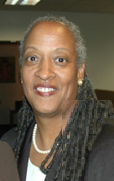You have /5 articles left.
Sign up for a free account or log in.

Getty Images
Faculty members and instructional designers work closely for many months converting an in-person class to an online one or developing an online course from scratch. While their work relationship is often amiable, tension and conflicts do arise.
Instructors, especially those who have taught a specific course for a long time, sometimes have difficulty involving a designer because they aren't comfortable with the changes and restructuring necessary to convert a face-to-face class to a viable online one. Meanwhile, designers, who typically have degrees or certifications in instructional design, say that they know how to build a robust, effective online course, and that instructors may not understand how much time, critical thinking and collaboration is involved.
Inside Digital Learning reached out to experts on both sides of the instructor-designer partnership to ask them for their ideas about how to work together collaboratively and manage any tension or conflict that may emerge. Their responses are below. Please leave your own ideas in the comments section at the bottom of this story.
***
When you are paired with a faculty member or instructional designer to develop an online course, how do you set expectations and define each person's role?
.jpg)
Robin Bartoletti, instructional designer, University of North Texas Health Science Center
The key word is empathy. Just as we need to build empathy with students in courses, we as IDs need to build empathy with faculty or subject matter experts. Empathy is a skill -- an instructional designer superpower, really -- that can be practiced and is essential for building the relationship that is needed to successfully work with faculty.
I cannot begin to understand how to partner with them until I understand where they are coming from. The process I use to empathize and connect before defining roles or expectations is to listen carefully and to understand. Were they sent to me? Do they want to be there? What is their own sense of their “busy-ness"? Do they know what they want?
Once I understand their emotional state, I can begin to interview for expectations and define roles. When I do not take time to empathize, it is not as successful.
.jpg)
Lorna Richey Kearns, director, Next Generation Learning Initiatives, University of Pittsburgh
I find it helpful to begin a new relationship by asking a lot of questions: What are the things that work well in your course? What are the things you struggle with? What are your worries in putting this course online? That last question can help to uncover misconceptions the instructor may have about online teaching and learning.
I like to be prepared to show the instructor a few different online courses, mostly to stimulate further conversation. It’s the right time to clarify roles, to describe what I and my team will do and to articulate what we expect from the instructor. But every situation is unique and the primary focus of that first meeting should be about building the relationship.

William Diehl, assistant professor of education, coordinator of online graduate programs, Penn State University
Having a clearly defined and agreed upon timeline with detailed milestones for all parties is important. Whether or not the roles have been clearly defined by the academic organization, it is important to discuss roles in an initial kickoff meeting with all course-design and development team members present. This meeting can remind each individual that they each depend upon one another to achieve a successful outcome.
After an initial meeting with all team members, it’s appropriate and valuable for the faculty member and instructional designer to meet to get to know one another and to discuss the finer details of their roles before the process begins. Having a discussion about individual workloads, past design experiences, organizational pressures, philosophies, strengths, weaknesses and passions can create a positive foundation moving forward.

Suzan Harkness, associate professor of political science, University of the District of Columbia
I think success in these pairings is to respect the roles each individual plays.The faculty member is the content-subject matter expert, and the instructional designer is the expert in "operationalizing" the delivery of content and the subject-matter material in a way that is easy to navigate and aligned appropriately.
Building relationships outside of the on-task roles facilitates smoother interactions. Therefore, engaging in coffee/tea or short meetings to present new tools and successes builds relationships that sustain respectful partnerships when course development gets underway.
***
What methods are particularly effective for avoiding conflict or tension with the instructor or designer?

Wanda Tucker, faculty chair of psychology, philosophy and religious studies, Rio Salado College
“Effective communication is key. [My instructional designer] provides bi-weekly updates on the progress of each product. He is comfortable with bringing to my attention any pending issues or potential areas of conflict. In addition, he works closely with my instructional coordinator to correct issues and close any loops. I establish clear expectations and constantly update [the designer] on changing dynamics.

Amy Grincewicz, senior instructional designer, Kent State University
Having a shared vision ensures everyone has a common destination and a common picture. They then collaborate as a team, supporting and encouraging each other. There is no competition between people, therefore there is no need to pass blame or hide your challenges and ideas. When we have a shared vision, we recognize that an entire organization consists of many parts that need to work together to create high-quality learning environments.
For these environments to be successful, they must be innovative to attract students and create a competitive advantage. ID leaders can improve collaboration and innovation by creating a friendly working environment where all ideas are welcome. This environments encourages respect, value, harnesses the richness of all ideas, backgrounds and perspectives. Enthusiasm also helps create a friendly environment.
![]()
Steven Crawford, associate director of academic innovation, College of Nursing and Health Innovation, Arizona State University
It is important for us to get to know each other and establish a working relationship, and this cannot be done in a couple of email exchanges or episodic meetings. By having regular and open conversations, we are able to become more of a team or partnership.
Bartoletti: Sometimes you have a faculty member who has strong opinions about how the instructional designer/faculty relationship should be -- and that is OK. I am willing to do some things that I normally do not do, that a faculty member should probably do themselves (like building assessments in the [learning management system], which is tedious at times), to establish a positive relationship. After that it is easier to suggest faculty try the thing themselves and then reset the expectations that I am a consultant and partner. I also offer recommendations based on evidence from academic literature if I must (gently) push back on faculty for anything. Knowing your learning research is another instructional-design superpower.
Kearns: Being respectful of the instructor’s time is extremely important. Acknowledging the myriad responsibilities of a typical instructor in higher education sends the message that the instructional designer understands the realities of academic life. Once the exchange of information begins, I make every effort to make sure instructors know that their input is being acted on. If a video is shot, let’s get a sample to show the instructor as soon as possible. If the instructor has turned in the majority of the material that I’ve requested for one of the online learning modules, let’s build that module on the learning management platform and show the instructor what it looks like.
***
How do you effectively respond when conflict or tension arises during the online course development process?
Diehl: My philosophy is to recognize it and to address it directly, especially if it is going to jeopardize the course quality and development process. Thinking of your relationship with the instructional designer as a long-term relationship is important. Hopefully the instructional designer and faculty member or subject-matter expert can agree that the student learning experience is paramount so that can be the common ground that both can return to if process or philosophical differences arise.
Crawford: I try to understand the position of the instructional designer. If an instructional designer is trying to persuade me to do something that I am uncomfortable with, then I want them to provide me with an evidence-based rationale as to why their idea should be followed. If we are building a new course, I may be willing to try their idea in the next iteration of the course as it may not be a technology or assessment approach with which I am comfortable. Hopefully the source of the conflict or tension is over how to achieve our goal as opposed to what our goal should be. Most often we are trying to achieve the same goal, but using a different method.
Tucker: We have established a mutual respect and understanding that involves a recognition of the expertise of each other and our roles and responsibilities. It is acknowledged that I ultimately own the product. However, my designer is comfortable with bringing to my attention any challenges that impede the development process or potential improvements. For example, it is not uncommon for me to have lofty goals and add to our bucket list, additional projects. My designer contacted me and expressed that my desired outcomes were weighing heavily on all parties. This allowed me to revise the timeline of the deliverables.

Sandra Johnson, instructional consultant, New Mexico State University
Our university uses a quality metric that all online courses are expected to meet. Since the metric is set by the university and not from me, I have very little conflict. Both sides know what we have to do -- meet the metric for an online course. This removes any conflict between the two of us. If we do have a conflict, I practice my active listening skills to understand what it is that they really want to do. We can usually come to an agreement of doing what they want in a way that works for an online course.








